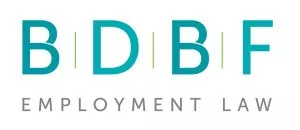An Employment Tribunal has recently decided that the dismissal of two senior male employees amounted to sex discrimination, where the dismissals had followed the announcement of the employer's gender pay gap figures and a radical new approach to diversity within the business.
What does the law say?
The Equality Act 2010 protects workers from discrimination on the grounds of certain protected characteristics, such as sex, race and disability. Although it is typically workers from minority groups who assert their legal rights in this respect, the protections are available to all workers.
The gender pay gap reporting rules came into force in 2017, requiring employers with 250 or more employees to publish gender pay information on an annual basis from 4 April 2018. Analysis of reports published in 2018 and 2019 reveal that men tend to occupy the most senior and highly paid roles, indicating that the gender pay gap can be understood, primarily, as a gender representation gap. Although there is no legal obligation on employers to take steps to close their gender pay gap, many choose to do so in order to advance their reputation as an "employer of choice".
What happened in this case?
Mr Bayfield and Mr Jenner (the Claimants) are both advertising professionals who had worked as a team for many years. Both are white British, heterosexual, middle aged men. They began working for J Walter Thompson (JWT) on 4 January 2016. Their work was highly regarded, and they were both promoted to the role of Creative Director in July 2017. Yet by the end of that year, cracks had begun to appear in the relationship. Their manager, Lucas Peon, expressed concerns that they were overly attached to "traditional" forms of media advertising and urged them to expand their digital output. Feedback obtained from colleagues echoed those concerns and highlighted that the pair lacked enthusiasm and could be indecisive.
In April 2018, JWT published its gender pay gap report for 2017, revealing a median gender pay gap of 44.7%, the highest figure across the advertising industry in that year. The report noted that "There is an acute problem of female representation in creative – a majority of senior jobs in that department are held by men, not just at [JWT] but also in our industry."
The following month, Mr Peon and another of JWT's Creative Directors, Jo Wallace, gave a presentation at the "Creative Equals Conference". The presentation was intended to explain how JWT planned to address their gender pay gap figures. The presentation referred to the fact that JWT was recruiting new female talent, and that they had to "...do what it takes to ensure these women remain in the business and rise to the top". More controversially, the presentation contained a slide with the following words scored out with a black line: "WHITE, BRITISH, PRIVILEGED, STRAIGHT, MEN CREATING TRADITIONAL ABOVE THE LINE ADVERTISING". Ms Wallace went on to say that: "...the reputation JWT once earnt as being full of white, British, privileged, straight men creating traditional above the line advertising has to be obliterated."
The Claimants raised concerns about the presentation, highlighting that there were a lot of "worried people" in the Creative Department. They were called to a meeting with Mr Peon and Ms Hoyle, JWT's HR Director. The discussion at the meeting was tense, with Mr Peon and Ms Hoyle arguing that the intention was to obliterate JWT's poor reputation, not obliterate staff who matched the description used in the presentation. Ms Hoyle later described the conversation as "horrible" and as the "lowest point" she experienced during her time working for JWT.
Around this time, JWT decided to commence a redundancy exercise within the Creative Department. In the evidence before the subsequent Employment Tribunal hearing, none of the company's witnesses were able to recall the date of the meeting when this decision was taken (i.e. whether it was before or after the heated discussion). Witnesses also testified that no papers or notes were made regarding the proposals in order to stop the news getting out. This was in contrast to the approach taken in previous redundancy exercises. The Claimants (as well as three Senior Creatives who had also complained about the presentation at the Creative Equals Conference) were made redundant.
In 2019, JWT merged with Wunderman to form Wunderman Thompson (UK) Ltd. The Claimants brought claims against Wunderman Thompson (UK) Ltd in the Employment Tribunal for:
- direct sex, age, sexual orientation and race discrimination;
- harassment related to sex, age, sexual orientation and race;
- victimisation;
- automatic unfair dismissal and detriment for having blown the whistle; and
- unfair dismissal.
What was decided?
The Tribunal upheld the claims of direct sex discrimination, harassment related to sex, victimisation and unfair dismissal and dismissed all of the other claims.
Direct sex discrimination and harassment related to sex
The Tribunal concluded that the treatment the Claimants experienced during the heated discussion with Mr Peon and Ms Hoyle, and the scores and comments they received during the redundancy process, were acts of direct sex discrimination during the course of employment. Alternatively, they were acts of harassment related to sex.
Further, sex was a significant reason for their dismissals. Two hypothetical female comparators would have been treated differently. A similar challenge raised by such women would not have been viewed as a threat to the company's wish to change its reputation. Moreover, the company would have not been motivated to remove two female Creative Directors. By contrast, removing the Claimants would have an impact, both in terms of the gender pay gap figures and through opening up senior positions to female candidates. Alternatively, the dismissals were harassment related to sex.
Victimisation
The Tribunal held that the raising of concerns about the wording used in the presentation, and the comments made in the discussion that followed, were protected acts. The emails were sent in direct response to what they considered the presentation inevitably meant in practice (i.e. that JWT was preparing to dismiss creatives who were white, British, male, straight and middle class and who created traditional-style advertising). As such, the emails were directly referring to issues of unfair treatment based on the protected characteristics of sex, sexual orientation and race (there was no mention of age).
The Tribunal concluded that:
- the treatment the Claimants experienced during the heated discussion;
- the scores and comments the Claimants received during the redundancy process; and
- the handling of a subsequent grievance process and grievance decision;
were all acts of victimisation during the course of employment.
Further, the decision to dismiss the Claimants was taken because they were seen to have "overstepped the mark"with the comments made in their emails and in the meeting that followed. This decision was made before any redundancy process had begun and the redundancy scoring exercise that followed was simply "retrofitted" to fit this decision. Therefore, the dismissals also amounted to unlawful victimisation.
Unfair dismissal
Finally, the Tribunal decided that the dismissals were ordinarily unfair. The real reason for the dismissals was that the Claimants had raised complaints and because they were seen as an impediment to the company's agenda on gender diversity and the gender pay gap.
The redundancy dismissal process was also unfair. There was no consultation prior to the selection for redundancy and the redundancy scoring was a sham designed to ensure the predetermined decision to dismiss could be justified. There was also a failure to consider alternatives to redundancy, such as voluntary redundancies, and the appeal process was unreasonable and unfair.
Wunderman Thompson (UK) Ltd has said it intends to appeal the Tribunal's decision.
What does this decision mean for employers?
Employers with large gender pay gaps will often wish to take steps to correct the underrepresentation of woman at senior level, thereby improving their gender pay gap figures. However, this case shows that employers also need to tread the line between being bold and being antagonistic. Public statements of the kind used by JWT clearly have the capacity to upset workers and provoke complaints. Employers need to hold in mind that this group of workers is protected from discriminatory treatment in the same way as minority groups possessing the same protected characteristics.
Manoeuvring staff out of the business to advance a diversity agenda opens up the risk of discrimination complaints. Given that employers are not yet compelled to take steps to close their gender pay gaps, this seems like an unnecessary risk to take, no matter how great the desire to be regarded as an employer of choice. Rather, a longer-term strategy, comprised of different measures, is preferable. The Government Equalities Office has published guidance on evidence-based actions for employers to close the gender pay gap and improve gender equality. The Equalities and Human Rights Commission has also published its own guidance on how to close the gender pay gap.
This case also highlights the need for managers to be trained on how to recognise protected acts and respond to complaints which sit contrary to a wider diversity agenda.
Bayfield and Jenner v Wunderman Thompson (UK) Ltd and others
The content of this article is intended to provide a general guide to the subject matter. Specialist advice should be sought about your specific circumstances.


